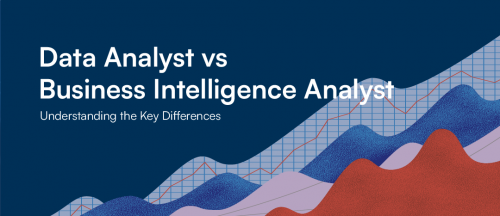

Navigating the Green Horizon: A Deep Dive into the EU Green Taxonomy (3/4)

For some, defining what a sustainable activity is might seem as simple as answering the question is it
good or bad. Some activities indeed do not leave room for debate, enabling to unanimously categorize
them. It is somehow more complex when no better alternative exists.
Objectives of the taxonomy
The Green Taxonomy is a framework developed by the European Union (EU) to establish a common
language and classification system for environmentally sustainable economic activities. It defines
criteria for economic activities that are aligned with a net zero trajectory by 2050 and the broader
environmental goals other than climate.
Conditions for an activity to be considered as sustainable
Depending on the classification of the activity, the activity will have to comply to all or partly with the
following environmental objectives and general conditions.
Environmental objectives
There are six environmental objectives:
- Climate change mitigation
- Climate change adaptation
- Sustainable use and protection of water & marine resources
- Transition to a circular economy
- Pollution prevention and control
- Protection and restauration of biodiversity & ecosystems
General conditions
- Do No Significant Harm (DNSH) Principle: The activity must comply with the DNSH principle, meaning
it should not cause significant harm to any of the environmental objectives. This involves assessing and
managing potential negative impacts on the environment. - Technical Screening Criteria: Specific technical screening criteria are provided for each environmental
objective. These criteria define the performance thresholds and metrics that an economic activity must
meet to be considered environmentally sustainable. For example, for climate change mitigation, an
activity might need to meet certain greenhouse gas emissions reduction targets. - Compliance with Minimum Social Safeguards: The taxonomy also includes certain minimum social
safeguards that must be met by the economic activities. This includes compliance with international
labor standards, respect for human rights, and adherence to health and safety regulations. - Disclosure and Transparency: Entities engaging in the economic activities must disclose relevant
information on how they meet the taxonomy criteria. This promotes transparency and allows investors
and stakeholders to assess the sustainability of these activities.
The three classifications
These classifications are designed to provide a nuanced approach to sustainability, recognizing that
some economic activities may currently have negative environmental impacts but are on a path toward
improvement.
1. Green Activities
They substantially contribute to at least one of the six environmental objectives outlined in the
taxonomy without causing significant harm to the other objectives. Green activities meet the technical
screening criteria specified for their respective environmental objectives.
2. Transition Activities
They make a substantial contribution to at least one environmental objective while simultaneously
having some negative environmental impacts. The idea is that these activities are in transition toward
becoming fully green. To be classified as a transition activity, the entity must have a clear and
ambitious plan for mitigating its negative impacts and progressing toward alignment with the
taxonomy’s criteria over time.
3. Enabling Activities
They are those that provide essential goods, services, or technologiesthat contribute to the transition
to a green and sustainable economy. These activities may not necessarily have direct positive impacts
on the environmental objectives themselves, but they play a crucial role in facilitating the transition
of other activities toward sustainability. Enabling activities must also comply with minimum social
safeguards.
Debated topics and limits of the taxonomy
While the European Green Taxonomy has been introduced with the goal of promoting environmental
sustainability and transparency in economic activities, it has also generated debate and faced certain
challenges.
There is ongoing debate about the scientific basis and precision of the criteria used in the taxonomy.
Some argue that the criteria should be more stringent and grounded in the latest scientific evidence,
while others express concerns about the feasibility and practicality of meeting such criteria.
Another cause of friction is around the scope and coverage of the taxonomy and questions arose
regarding the decision whether to include or exclude certain sectors and activities.
There are concerns that taxonomy might block innovation by being too rigid with emerging
technologies that don’t fit neatly into the existing criteria.
While the green taxonomy mainly focuses environmental impact, some would have liked to include
more prominently social factors.
Conclusions
The taxonomy is a dynamic framework that evolves over time. The criteria and technical screening are
subject to updates and revisions as scientific knowledge advances, and as the EU refines its
sustainability goals and standards. It is a work in progress, and adjustments may be made based on
feedback and evolving circumstances. Public consultation and ongoing dialogue are crucial
components of refining and improving the taxonomy to address some of the debated topics and limits
mentioned.
The taxonomy, and more generally speaking the coming legislation under the Green deal, will require
accurate and reliable data for companies to assess and report their environmental impacts. Ensuring
the availability and quality of data can be challenging.
HeadMind Partners is used to work on the whole data value chain, from the collection, to the
processes and the visualization of the data. It already took part in huge transformation projects to
help companies in structuring their data environment in order to report for audit and legal/external
communications in sustainability.
Adrien Panzer.
Supervising Associate Consultant • Sustainable IT Lab PO • Digital Transformation
https://commission.europa.eu/strategy-and-policy/priorities-2019-2024/european-green-deal_en
https://ec.europa.eu/sustainable-finance-taxonomy/
https://eur-lex.europa.eu/legal-content/EN/LSU/?uri=CELEX:32020R0852
https://eur-lex.europa.eu/legal-content/EN/TXT/?uri=CELEX:32020R0852
https://www.thecorporategovernanceinstitute.com/insights/lexicon/what-is-green-taxonomy/






